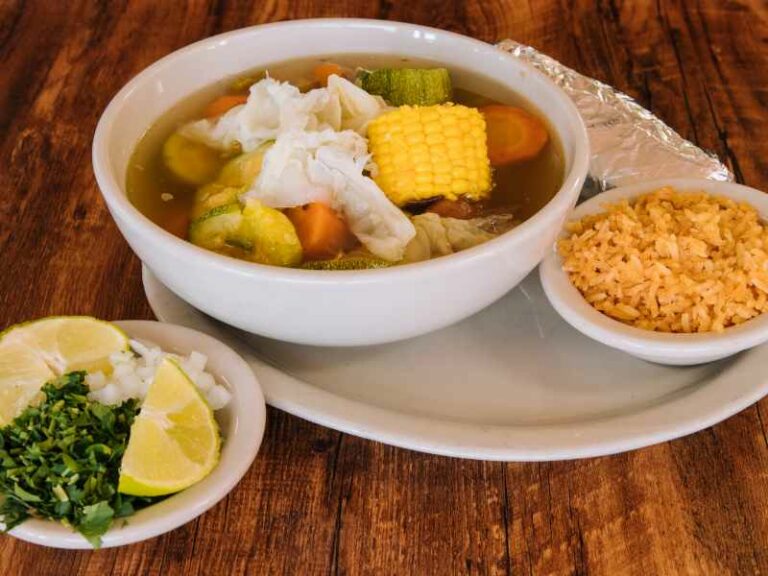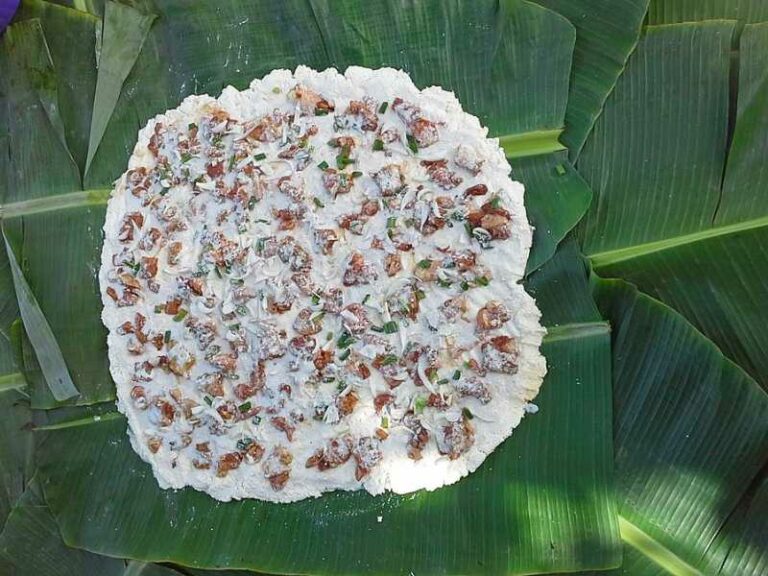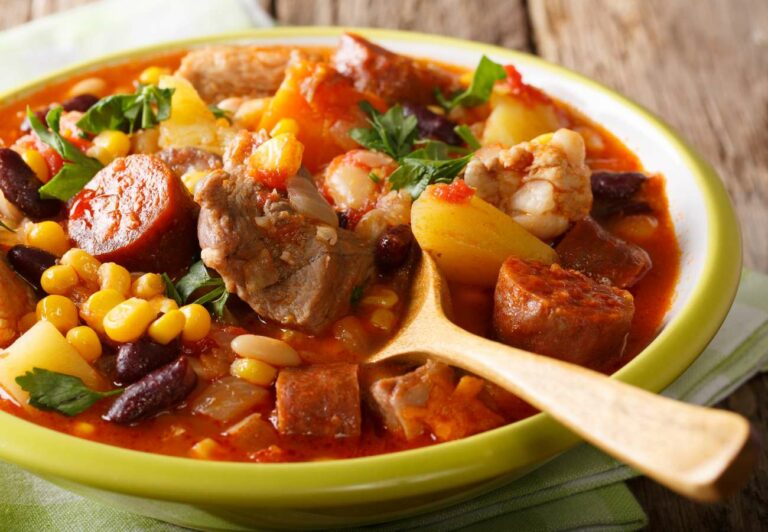Djiboutian Food: 11 Must-Try Traditional Dishes of Djibouti
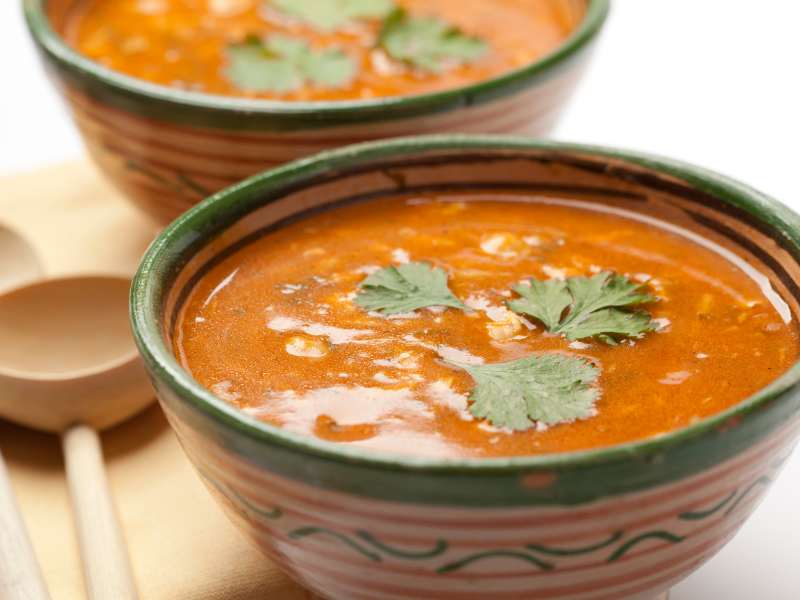
Nestled between the East African Rift Valley and the Red Sea, Djibouti is a small African country with a unique and otherworldly landscape. The country is home to Lake Assal, the salinity levels of which hover around ten times that of the ocean and making it the saltiest lake in the world.
Djibouti is also positioned in the Afar Triple Junction, where three tectonic plates (the Nubian, the Somalian and the Arabian) are slowly separating from each other. This seismic activity makes Djibouti susceptible to earthquakes and leaves the land rife with hot springs and craters.
Djibouti also has a hot and arid desert landscape, leaving them almost entirely dependent upon imports for their food supply. Most imports will come from neighboring Ethiopia or Somalia and are brought into Djibouti city, where over three-quarters of the country’s population lives. The main ethnic groups present are Somali and Afar, although there are smaller populations of rural and nomadic ethnic groups as well.
Strategically positioned in the Horn of Africa and across the Red Sea from Yemen, Djibouti has been a stopover for merchants for millennia. The Somali and Afar ethnic groups were some of the first to adopt Islam through their interaction with the Arab peninsula, and now Islam is the dominant religion in Djibouti. However, Djiboutians enjoy religious freedom and there are also populations of other religions in the country.
Most Popular Djiboutian Dishes
Djibouti’s extreme heat and arid, untenable land makes growing its own food very difficult. Despite this challenge, its convenient location on many trade routes, small size and easily traversable terrain make it easy to import foods from its neighbors of Ethiopia, Somalia, and Yemen. Its cuisine is a mixture of East African influences, coming from its Somali and Afar populations, as well as Arabic and French cuisine. Many of the spices used are those customary in Middle Eastern cuisine such as saffron, cardamom and cinnamon.
Many meals revolve around a meat, usually beef, goat or lamb. These are often eaten in stews alongside a carbohydrate such as injera, lahoh or ghee. Fish is also commonly eaten in stews or grilled whole, and peanuts might be added to stews or sauces to improve texture and flavor.
Dishes can be quite spicy as well as fragrant, so many households will burn incense in the kitchen and common areas after cooking. Coffee and black tea are drunk throughout the day and might be served with baked confectionaries as a snack. Imported tropical fruit is a popular snack option as well and is great to eat with freshly brewed coffee.
Djiboutian cuisine is born from years of international trade and the traditions of the Somali and Afar peoples. So without further ado, here are the absolute must-try traditional dishes of Djibouti, along with recipes to try for yourself.
Skoudehkaris
Known as the official national dish of Djibouti, skoudehkaris is a dish made of rice and lamb, cooked together in one pot along with cumin, cardamom, and fresh cilantro. Cayenne adds spice to the dish while the tomato base gives it a beautiful red color. It is often eaten as a dinner food and is favored for its robust spices and easy cooking.
This dish is an excellent representation of Djibouti’s gastronomic history, based on the spices used and the way it is prepared. French cooking style and Middle Eastern flavors combine over a popular meat of East Africa, lamb, to create this melting one-pot meal.
Marake Kaloune
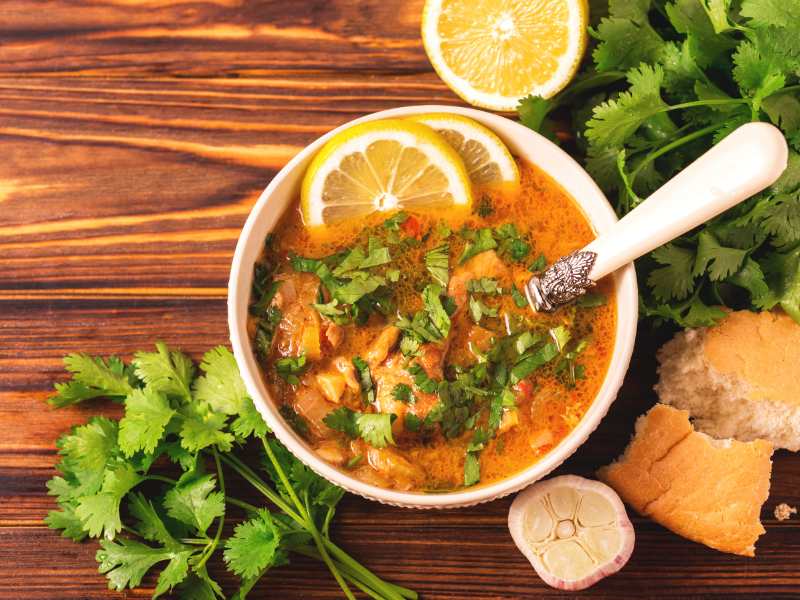
Marake Kaloune is a fish stew made with white fish filet, rice, onions, okra, eggplants and tomatoes. It is seasoned with garlic and tamarind paste and then topped with fresh parsley. Just like Skoudehkaris, this dish is a one-pot meal and goes well with bread such as injera or canjeero.
Although most whitefish can be used for this recipe depending on what’s available, tilapia and sea bass are most often used. The filets become tender and flaky after boiling along with the rice, soaking up the many spices and tomato base to create a fragrant and delicious taste of Djibouti.
Fah-fah
A traditional dish enjoyed by the Somali people of Djibouti, fah-fah is a soup made with goat meat, leeks, cabbage, potatoes, and some green chilies for a kick. It is often served with aish or injera bread.
This dish is especially popular in the southern region of Djibouti that borders Somalia. In this region, the dish is often served alongside lahooh, a spongy commonly used in Somali cuisine.
Mukbaza
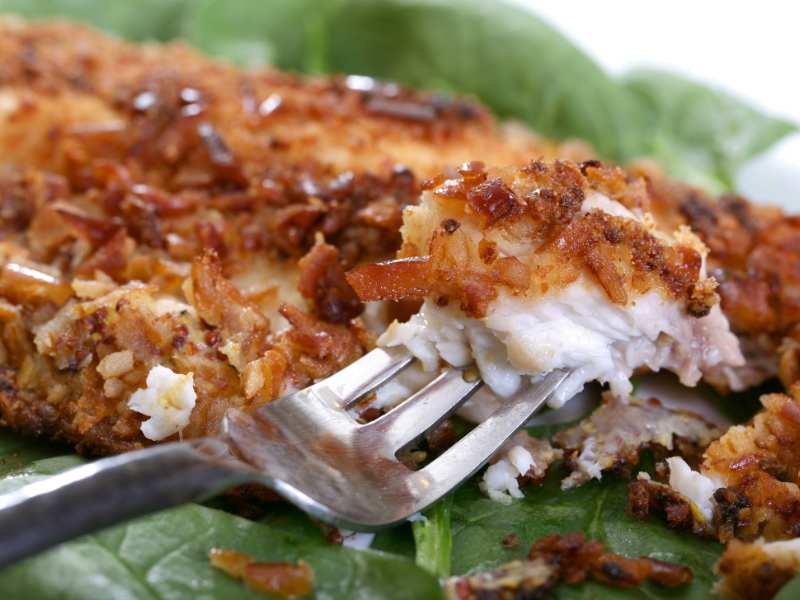
Mukbaza, also known as Yemeni poisson, is a roasted fish dish known for its unique look that is comparable to the folded flatbread of the same name. This dish uses onion and chutney, along with South Indian spices to make a hot and flavorful dish. Originally coming from Yemen, Djiboutians will sometimes add their own twist to this recipe by adding honey or lemon.
Cambaabur
Comparable in looks to a crêpe and sometimes known as one, Cambaabur is an aromatic fermented flatbread common across Somali populations in Djibouti. This pancake-like bread is sometimes seen as a spiced version of anjero, as the added seasonings pack this food with flavor.
Cambaduur is often eaten as a breakfast food during Eid, a holiday widely separated across Djibouti’s majority-Muslim population. It is topped with or served alongside yogurt for a nutritious and filling first meal of the day.
Lahooh
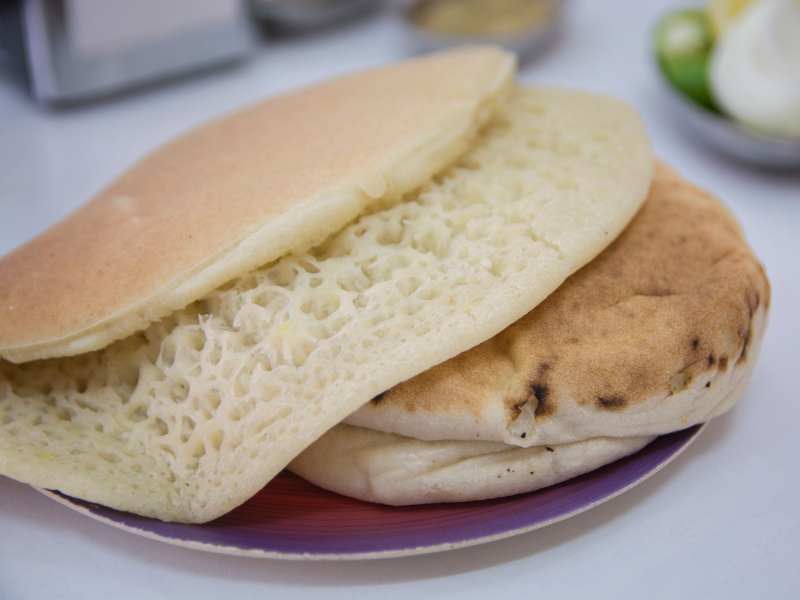
Lahooh is a kind of flatbread made of millet and wheat flour. It is especially popular in Somali cuisine where it is the national dish, although it appears just as often as part of Djiboutian meals. Its spongy texture and flat, round shape are similar to other flatbreads of the region.
Xalwo
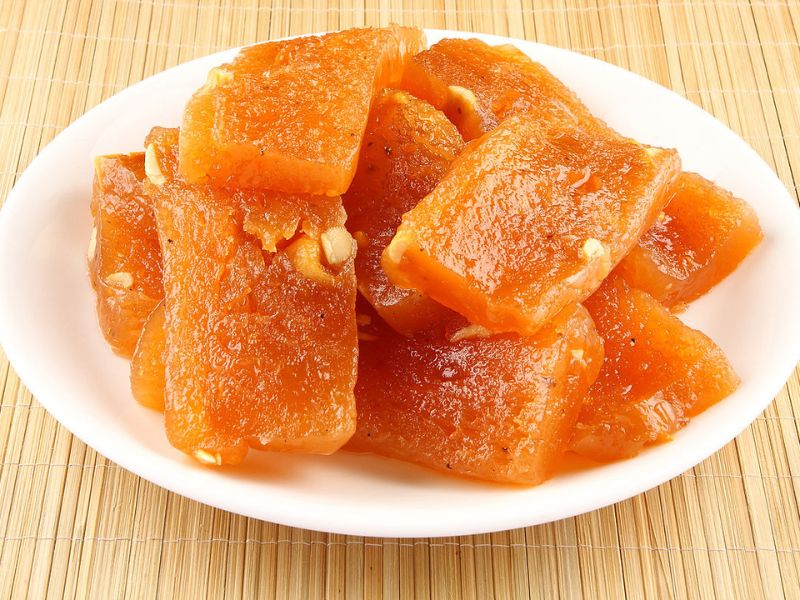
Simple to make and easy to find, Xalwo (also written as Halwa, Halwo, or Halwad) is a chewy cornstarch-based confectionery seasoned with brown sugar, cardamom, cloves, and saffron. Some variations will add nutmeg or peanuts as well. This dessert is typically served alongside Arabic coffee or a mug of spiced tea.
Sambusa
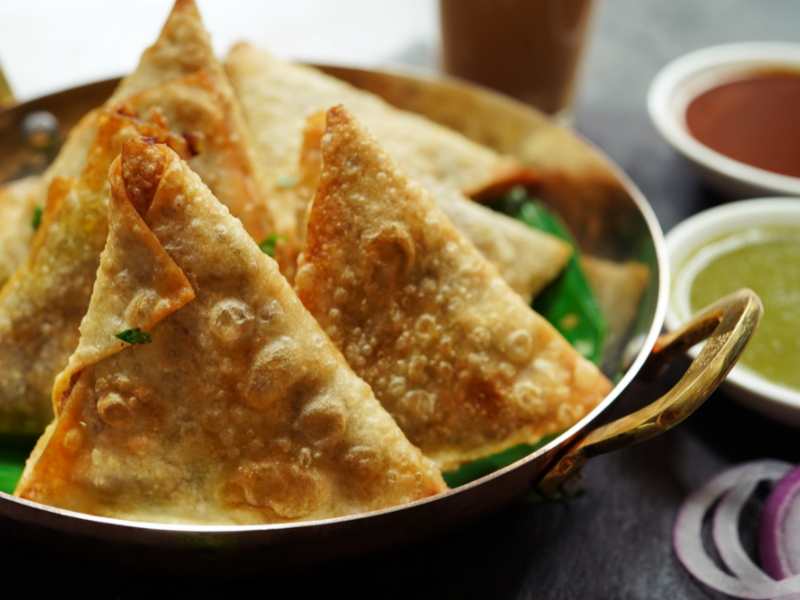
Djiboutian sambusas, are meat and onion stuffed pastries flavored with garlic, chilis, eaten as a savory appetizer or snack. They are similar to the famous Indian samosas and the many variants found across the Middle East and East Africa. The Djibouti version of this dish uses green chili pepper to add heat and flavor to the meat and onion mixture.
Harira

Harira is a lamb, lentil and tomato soup enjoyed in many Djibouti homes as a filling evening meal. It is often eaten with flatbread or pita bread, as well as hardboiled eggs or fruits. This dish originally hails from Morocco and likely made its way to Djibouti along the many trade routes that pass through the country and were used by Moroccan merchants.
Djiboutian Banana Fritters
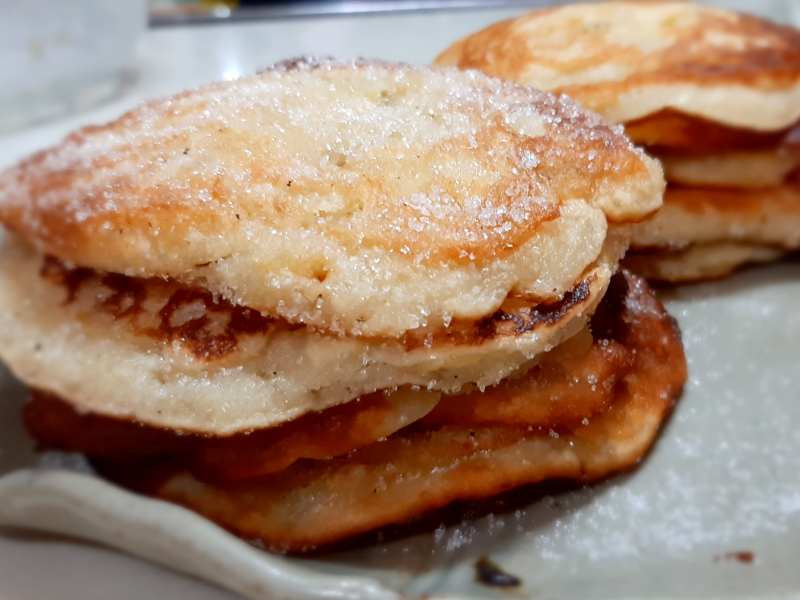
Although banana fritters, or mashed bananas fried in a sweet dough, is a dish present in many cultures, these delicious treats make the list of must-tries of Djibouti cuisine. The Djiboutian version of this dessert looks similar to a small pancake, topped with powdered sugar and the perfect finish to a savory meal.
Camel Burgers
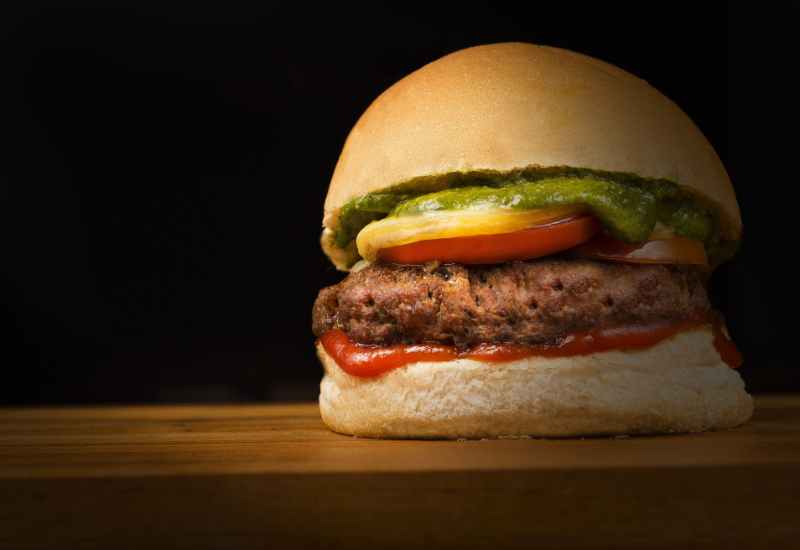
Camel burgers are, quite simply, burgers made from camel meat – most popular in countries where there is a large population of camels.
The meat from the hump is considered to be the most delicious but all of the meat is quite lean, rich in protein and contains less cholesterol than other red meats. The taste is comparable to beef with a slightly more sweet aftertaste.



